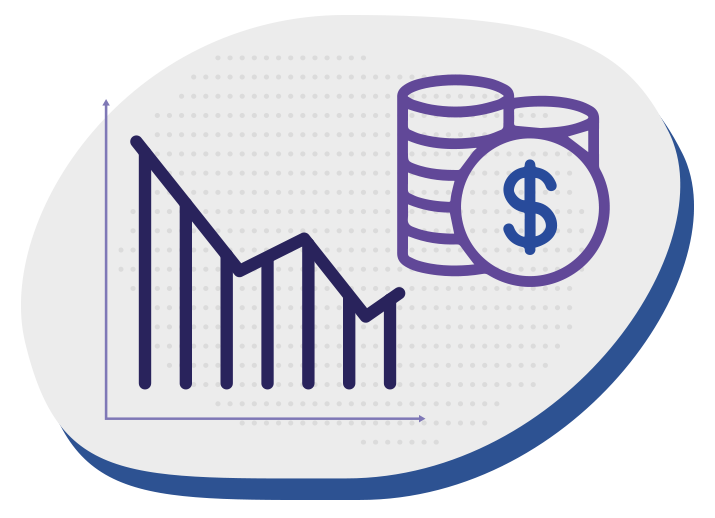How does price elasticity of demand influence e-commerce business?
- 04 March 2021

Price elasticity of demand is one of the most important retail business measures. This value says a lot about consumers’ reactions to price fluctuations, which is a significant help for all the online shops. Good understanding of correlation between pricing and demand helps to optimize pricing strategy and win customers’ loyalty. Read our article to learn what is price elasticity of demand and how it can improve your sales results in e-commerce.
What is price elasticity of demand?
What is price elasticity of demand (POD)? Definition says that it’s a microeconomic concept which measures how changes in price affect the demand for a product. The formula is the following:
POD = % change in quantity of the demanded good / % change in price of the demanded good
When the value of POD is higher than 1, we consider demand as elastic. When it’s lower than 1, the demand is inelastic. To put it simply, when even a small fluctuation in price affects the demand, the product is elastic. When a demanded quantity remains the same or changes just slightly after changing the price, the product is inelastic.
In practice, the higher the price is, the lower is the demand. However, there are a few exceptions of this rule such as luxury products. In this case price increase may result in even higher demand, as this kind of goods is usually purchased by wealthy customers.
Price elasticity of demand depends on many factors such as product type, urge to purchase, brand loyalty or availability of substitutes. Let’s move on to the examples to see how it works in reality.
Elastic demand
Elastic demand means that even a slight change in price significantly affects the demand. Examples of elastic goods are:
- Soft drinks
- Clothes
- Electronics
- Sweets.
All the products above are not essential products. It means that customers are willing to purchase them only when they consider their price as attractive. When they don’t, they give up or postpone their purchase decision. For example, clothes or sweets considered as too expensive can be easily replaced with substitutes. Also, electronic goods can be purchased as soon as they’re discounted or just from another producer, as such markets are highly competitive.
This correlation means that price decrease of elastic goods can truly boost sales, and on the other hand – every increase can cause significant loss. So, all pricing-related decisions should be taken carefully, as they may strongly influence the overall business results.
Perfectly inelastic demand
On the contrary, price of inelastic goods is not that important for their purchasers. Although perfectly inelastic demand is rather a theoretical concept which doesn’t appear in reality, there are many examples of inelastic goods which are:
- Life-saving medicines
- Gasoline
- Electricity
- Cigarettes
- Premium brands products.
Most of the products above satisfy essential needs. This means that customers will most probably keep purchasing them regardless of the price. For instance, drivers will keep buying nearly the same amount of gasoline, and, on the other hand, they will also not purchase more than they need when the price goes down. It is also unlikely that smokers will give up their addiction due to price increase on cigarettes.
This correlation means that producers or retailers selling inelastic goods can afford much more premium pricing strategy, as it will not influence the overall demand significantly. However, as perfectly inelastic demand is extremely rare or only theoretical, increasing the price of inelastic goods to unacceptable values will most probably result in significantly reduced demand.
Inelastic vs elastic demand
As you can see, an accurate calculation of price elasticity enables retailers to maximize their revenue. For example, it might not be wise to strongly decrease the price of inelastic products. However, discounts on elastic goods can quickly boost demand and sales.
This is why it’s so important to carefully observe and measure purchasers behavior and their reactions to price fluctuations. In case your shoppers have reacted positively or negatively to a price change, it’s highly probable that they will repeat their actions in the future. Based on this, you can react quickly and also predict the results of your upcoming business decisions.
Price elasticity of demand vs pricing strategy
So, how to set prices in the right way? The key to success is to learn how consumers react to price fluctuations. It is not easy though, however, it can be managed with support of modern market monitoring tools. Such platforms help retailers to carefully monitor quantities of purchased goods in relation to price and observe and measure customers behavior. Such knowledge can significantly help to adjust supply and offer features accordingly in order to increase revenue.
However, to get a full overview of the market, it is necessary to also monitor your competitors to be aware of what their prices, promotions and offered products are. Following all existing online shops, marketplaces and price comparisons manually is strongly time-consuming and susceptible to errors. Modern price monitoring tools allow you to do it fully automatically and receive relevant and always updated data without any effort. You can learn more about such features here: Competitor Price Monitoring and from our Youtube video:
Moreover, the next extraordinary tool which can skyrocket e-commerce sales result is dynamic pricing. This feature from Dealavo is based on AI which sets the right price automatically accordingly to the current market situation, competitors’ prices and price elasticity of demand among other factors. To learn more about market monitoring tools, feel free to contact us. We will be happy to provide you with more information and the best tips on how to optimize your pricing strategy.